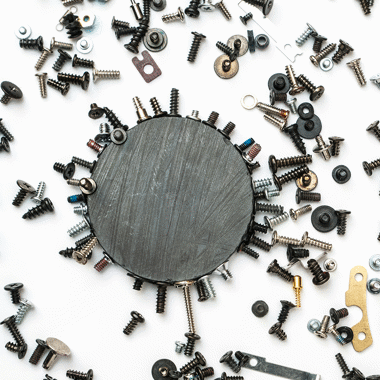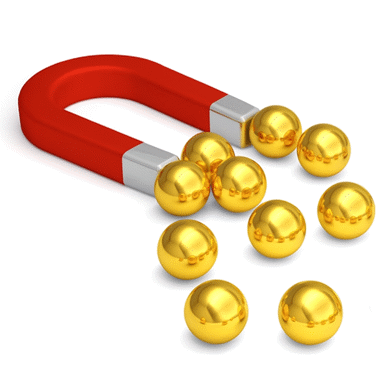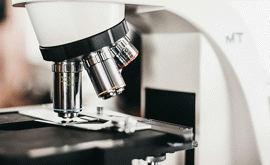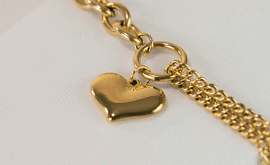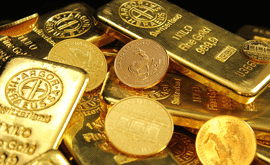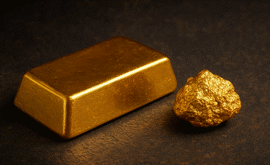Is Gold Magnetic? The Science Behind Gold’s Properties
What is magnetism?
Magnetism is a natural physical force produced by the movement of electric charges, specifically electrons within atoms, which causes attraction or repulsion between certain materials. This works at an atomic level, where electrons orbit the nucleus and spin on their own axes. In some materials, the electrons spin in the same direction, creating a strong magnetic field and causing them to be easily attracted to magnets. However, other materials do not have this type of electronic alignment so they either have a weak response to magnetic fields, or sometimes do not respond at all.
Materials generally fall into the following three categories:
- Ferromagnetic: Strongly attracted to magnets (e.g., iron, cobalt, nickel)
- Paramagnetic: Weakly attracted to magnets (e.g., aluminium)
- Diamagnetic: Weakly repel magnetic fields (e.g., gold, silver, copper)
Is gold magnetic?
Pure gold is not magnetic. If you hold a magnet to a 24ct gold bar or coin, there will be no attraction. This is due to gold being a diamagnetic material which will not be attracted to a magnet – in fact, it actually has a very weak repulsion to magnetic fields, although this is far too subtle to see without using scientific equipment.
This diamagnetic quality distinguishes gold from many other metals like iron, nickel, and cobalt which are ferromagnetic and strongly attracted to magnets.
Scientifically, gold’s atoms have paired electrons that are unable to be aligned to create a magnetic field. This also contributes to some of gold’s other characteristics such as excellent electrical conductivity and low reactivity.
Does gold stick to a magnet?
Pure gold does not stick to a magnet. If a gold item is attracted to a magnet, it may not be pure - it could be gold-plated or made from another metal.
Many items of gold jewellery are made with alloys which are a mixture of gold and other metals in order to enhance its durability or to change the colour. If other metals such as nickel or iron are used in the alloy, these items may show some magnetic response. Clasps and chains on jewellery items may also contain trace metals even if the main item is made from high-purity gold, and white gold can occasionally show slight magnetism if nickel has been used as a whitening agent. This shows why magnet testing on precious metals can be helpful, but not necessarily conclusive.
Can you use a magnet to test if gold is real?
Using a magnet can be a simple and non-invasive way to help identify whether a gold item may be impure, gold-plated, or counterfeit. If a magnet attracts the gold item, then it cannot be made from pure gold.
However, a lack of magnetism cannot always guarantee authentic pure gold. If an item looks like pure gold but is actually made using another non-magnetic base metal like copper, stainless steel, or aluminium, it would still not be attracted to a magnet. Therefore, while magnetic testing can be a helpful first step, it should never be the only method used.
Is silver magnetic?
Like gold, silver is not magnetic. It is also a diamagnetic material so does not respond to magnetic fields, which means it is easy to test with a magnet. If a silver item is strongly attracted to a magnet, it is not pure silver.
Why does some jewellery show signs of magnetism?
If a piece of gold or silver jewellery shows signs of magnetism, this is likely due to the presence of other metals within the alloy. These can include:
- Nickel: Can be used in white gold alloys and can cause weak magnetism.
- Iron or steel: Found in clasps or fasteners and are magnetic.
- Cobalt: Rarely used but is strongly magnetic.
These metals are sometimes added to jewellery items to improve their strength and durability, or to change the colour, and can slightly alter the magnetic attraction of the piece.
Can real gold coins or bars be magnetic?
Genuine gold bullion coins and bars bought from reputable dealers and recognised mints or refineries are produced using high-purity gold. Therefore, these precious metal items should not show any magnetic attraction. If a gold bar or coin reacts strongly to a magnet, it is most likely made from another material.
If a bullion coin is manufactured in non-24ct gold, such as the 22ct-gold Sovereign or Krugerrand, the remaining alloy will usually be either copper or silver. Both of these alloy metals are non-magnetic so the coins should still not react strongly to a magnet.
Are any precious metals magnetic?
In their pure form, gold, silver, and platinum are not magnetic. However, if these metals are alloyed with magnetic materials or used as plating over a magnetic core, they may show some signs of magnetic attraction. This illustrates why magnetic testing alone can indicate when a piece may not be pure but is unable to always determine authenticity.
How to verify the authenticity of gold
A magnet test is a simple first step to check for obvious impurities. If an item is advertised as 24ct, 999.9, or 999.0 fine gold and is attracted to a magnet, it is not a genuine gold product. However, a magnet cannot detect all counterfeit items, and other tests should be used for a more accurate assessment, such as:
- Look for hallmarks, stamps, or mintmarks
- Check for correct weights and dimensions
- Perform an acid test (best done by a professional)
- Use a reputable bullion dealer or jeweller
How professionals verify the purity of gold
While a magnet test can give a first simple indication of whether a gold item is pure, professional testing often goes much further to ensure a product is genuine. Reputable bullion dealers and refiners use advanced methods to confirm gold content and authenticity.
One widely used technique is X-ray fluorescence (XRF), which analyses the metal’s composition without damaging the item. This technology provides quick and accurate results and ensures gold dealers and jewellers can verify the purity of a piece and detect counterfeit gold instantly – far beyond what a magnet can reveal.
In addition to XRF, a reputable bullion dealer may undertake precise weight and dimensional checks, and visual tests to identify key features such as milled edges, micro lettering, latent images, mint marks, and stamps. Together with XRF technology, these methods allow for accurate assessment of gold items.
Gold’s non-magnetic nature makes it special
Gold’s lack of magnetic properties can help to distinguish it from many other metals, making it a useful way to undertake basic authenticity checks. Understanding how magnetism relates to gold, silver, and platinum can help buyers and collectors navigate the precious metals market more confidently. However, while simple magnet tests can help to identify obvious counterfeit items, they may not be definitive. The most reliable method for verifying the authenticity and purity of gold is through XRF analysis, combined with expert evaluation. When in doubt, it is always best to consult a professional reputable precious metals dealer, and we always recommend purchasing from a trusted and reputable supplier to ensure you can be confident your gold is 100% genuine.
This blog represents one person’s opinion only. Please note, gold and silver prices may go down as well as up. Atkinsons Bullion & Coins accepts no responsibility for any losses based on information we have provided. We do not offer investment advice. Please carry out your own research before making an investment decision.
